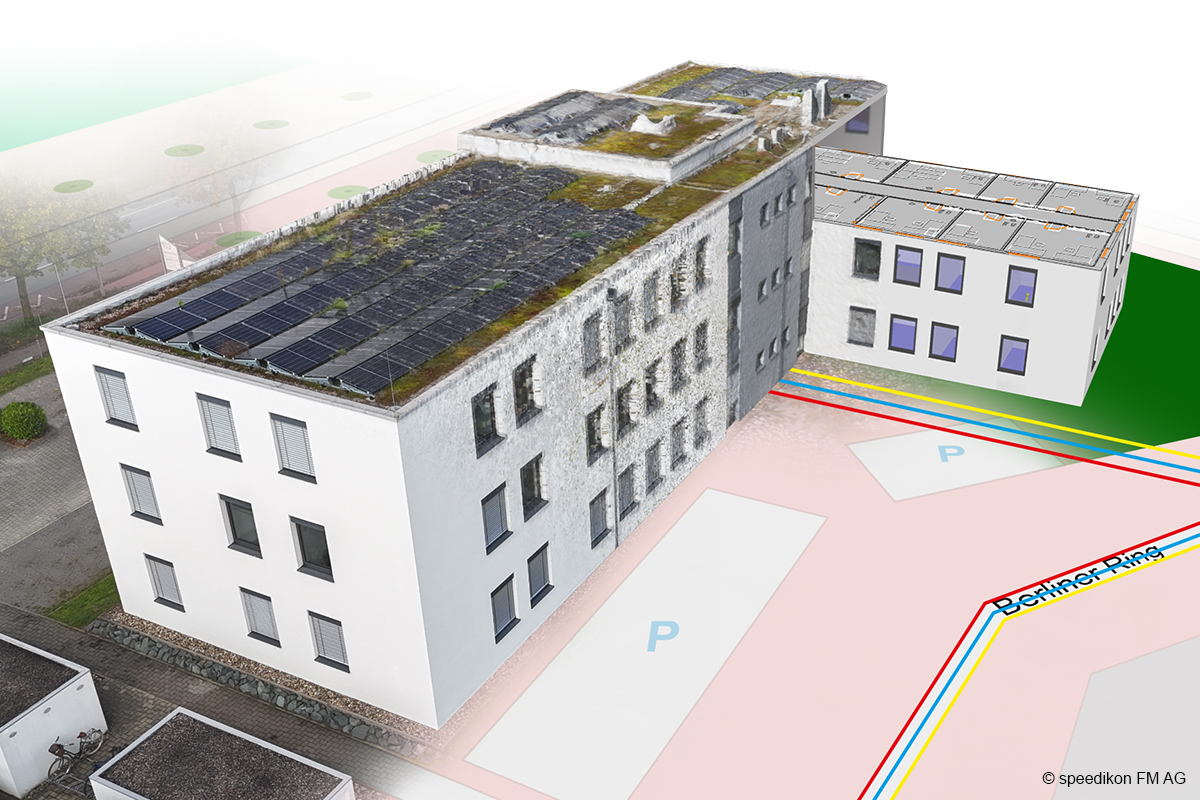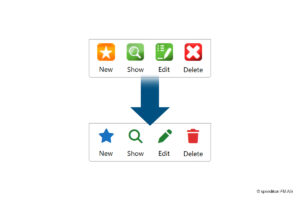One of the most difficult challenges for facilities management software is displaying large amounts of data in an extremely short space of time, for example in rental management or the help desk. Why is this? And what exactly does “extremely short time” mean?
Extensive Portfolios
Users of CAFM software often have extensive portfolios of buildings and facilities. These are linked to information in a variety of ways, i.e. they have extensive so-called object relationships. Examples include
- Location data
- Contracts for rental, maintenance, purchase, etc.
- Cost centers
- Ancillary costs
- Guarantees
- Areas
- Operating data
The number of these object relationships can be more than 30 for a simple room, which have to be compiled from the most diverse areas of a database. “Not that difficult”, you might object, because each field in a database has a unique ID and therefore only 30 IDs need to be queried. That is an excellent theory. In practice, however, it quickly falls apart. The reason?
Server Performance
A database has hundreds of thousands of such IDs, which leads to the first hurdle – server performance, which is a rare commodity in facilities management.
And then the data do not have a uniform structure. There are figures, there are words, there are texts and graphics. Some can be displayed directly, others have to be transferred to dashboards. And the window size should always remain the same.
Combined Solution
In order to get such volumes of data ready to work in less than a second, various approaches need to be combined in software development. This includes
- implementing a cascaded display which, similar to websites, first retrieves the content that currently needs to be displayed in order to load further content in the background.
- determining in advance which data needs to be displayed and how, in order to define identical window dimensions and their layout and internal structure.
- and to know which data is available and how quickly in order to determine the pinholes and rapidly improve their performance.
Of course, these are also only core aspects when it comes to designing a comprehensive system into a time-saving tool for the user, even with complex requirements. What is important here is one thing above all: That it works.
Reality Check
speedikon has already demonstrated this in various fields of application. Here are two examples from daily practice:
- Rental agreements: They include a rental property, the associated real estate, as well as a tenant, which can be a person or an organization, which also requires a person as a contact person, there may be a property manager, then ancillary costs must be assigned and also accounts for billing – and of course for the payment of rental amounts, so that depending on the task, the appropriate data is summarized in a single view.
- Maintenance: In addition to the location and technical data of a system, aspects such as running times, batches, warranties, maintenance, error messages, breakdowns, spare parts supply, suppliers, service personnel and more can be displayed at a glance, depending on the task.
In both cases, this fast, variable combination of data is essential in order to be able to make the most appropriate decisions quickly and well-informed. Because where relevant aspects have to be painstakingly compiled, business suffers and, in the worst case, even people suffer.
We can avoid this in a matter of seconds.
Image: kherudinakhmad; Frolopiaton Palm/alle Freepik.com; Montage: speedikon FM AG




